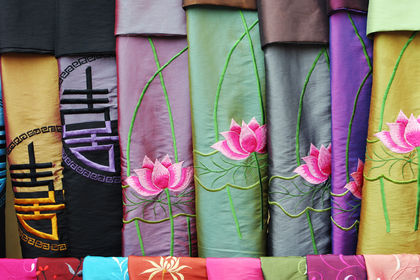Vietnam - Industry

Most heavy and medium industry is concentrated in the north, including the state-owned coal, tin, chrome, and other mining enterprises; an engineering works at Hanoi; power stations; and modern tobacco, tea, and canning factories. The industrial sector in the south is characterized by light industry and consumer goods industry, including pharmaceuticals, textiles, and food processing, although there are some large utilities and cement works. Much of the industrial sector in the north was badly damaged by US bombing raids during the war. In the south, the private sector was permitted to continue in operation after 1975, but all industry and commerce above the family level was nationalized in March 1978. The results were disastrous, and the regime now permits the existence of a small private sector, mainly in the area of consumer goods and other light industry. The results have been generally favorable; industrial production in the 1980s increased at an average annual rate of 9.5%. During the 1990s, industrial production grew by about 12% per year. Industry accounted for 38% of GDP in 2001, up from 28% in 1995. Industrial gross output increased by 14.2% in 2001. The private sector grew 20.3% and the public sector grew 15.3%, with the foreign-invested sector expanding slightly below average at 12.1%. The foreign-invested sector constitutes about 35% of industrial production. Leading industrial sectors are food processing, garments, shoes, machine building, mining, cement, chemical fertilizers, glass, tires, oil, coal, steel, and paper.
Food processing and packaging accounts for 40% of total export turnover. The average annual growth rage has been about 11%.
Export turnover in the textiles and garment industry was $2.1 billion in 2001 and expected to reach $2.5 billion in 2002. VINATEX (Vietnam National Textiles and Garment Corporation), the largest Vietnamese corporation in the sector, plans to invest $900 million in the period 2001 to 2005, made up of $700 million in the textiles sector and $200 million in material and accessories sectors, for equipment upgrades.
The leather and footwear sector earned about $1.55 billion in 2001 and an estimated $1.9 bi8l. in 2002. Vietnam is the eighth-largest exporter of leather and footwear.
Vietnam's rubber sector has been growing at about 15% a year with an output of 300,000 tons of dried latex. Plans are to invest about $100 million in the period 2001 to 2010 in building/expanding 11 latex plants. Construction has been one of the driving forces of economy, growing at 15% a year. The construction sector consists of about 3,500 companies, including 270 foreign invested enterprises worth more than $3.5.
Vietnam has a large-scale wood processing industry with a nation-wide network of 760 state-managed wood processing units. There are also over 200 local enterprises, 53 joint ventures and close to 1200 small scale production units. In 2001 the market for metal-working machinery and equipment was $45 million of which 90% was imported.
The state-dominated industrial sector, which accounts for about 45% of the country's GDP, is still marked by inefficiency and low productivity and has retarded the growth of the private sector. This is due the low level of development, characterized by obsolete plants and machinery, shortages of capital, raw materials, energy and transport, and a command-style economic system. Vietnam's assets include low wages, good skill levels, and a motivated work force.
The government owns an estimated 6,000 state-owned enterprises (SOEs): the majority of non-agricultural enterprises. Most of these SOEs reflect the inefficiencies of parastatals, including debt, obsolete equipment and practices, and poor labor. In 1997, the government organized 2,000 SOEs into 88 conglomerates, accounting for 80% of the state sector and further monopolizing the industrial sector. Foreign investment, while welcome, is hard pressed to find opportunities outside of the Vietnam government's reach. In February 2003, the first auction of a state-owned enterprise (SOE) took place, which resulted in the sale of the Hai Phong Agricultural Mechanical Engineering Company for $300,000 to a private Vietnamese company. The auction was financed by the Australian government.
Yours faithfully,
About vietnam industries.
Thanks